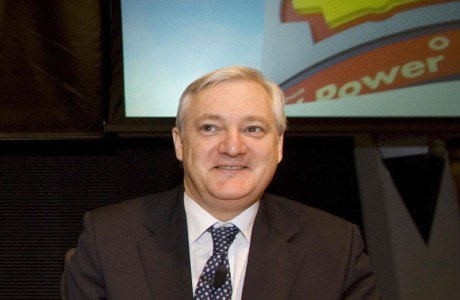Royal Dutch Shell PLC hopes to be drilling for oil offshore Alaska next month, Chief Executive Peter Voser said Tuesday.
“We are very encouraged with the progress in the Beaufort and Chukchi seas. All the permits are coming into place and we are looking forward to drilling, most probably in July and then later on in August and the early part of September,” Mr. Voser told Dow Jones Newswires.
“From a permitting, from a preparation point of view, it is all going according to plan but there is always a risk of challenges in the courts. That is the unknown in the whole process,” he said during an interview on the sidelines of the World Gas Conference in Kuala Lumpur.
Environmental groups have fought against Shell’s plans to produce oil from Alaska’s Arctic offshore, previously delaying the start of drilling there with legal challenges. Opponents say drilling there could damage the environment and that few emergency workers would be available in the sparsely populated region in case of an accident.
Mr. Voser said a planned joint venture project to export liquefied natural gas to Asia from Kitimat in western Canada would likely cost around $12 billion in its first phase, as each of the two LNG production trains envisaged would cost around $6 billion.
Initial output from the project–in which Shell is partnering with Mitsubishi Corp., Korea Gas Corp. and PetroChina Co.–remains unclear due to regulatory and other issues, “but it is important that it comes onstream in a certain time frame in order to capture growth in certain Asia markets,” he said.
Shell, the world’s largest shipper of LNG, and its partners in a natural gas project in Sakhalin, in Russia’s Far East, are still studying the possibility of adding a third LNG train there, he said. He declined to speculate when a decision would be made.
In January, Russia’s OAO Gazprom and its partners in the Sakhalin-2 project–Shell, Mitsui & Co. and Mitsubishi Corp.–said they may spend $5 billion to $7 billion to add a third train to the LNG plant, which would allow start-up between 2016 and 2018. Gazprom has 51% and Shell has 27.5% of the project.
Mr. Voser wouldn’t be drawn on another gas project in Russia’s Far East–Shtokman–for which Gazprom has said new partners might be introduced.
“There are significant gas resources in that [Barents Sea] region. Given the strengths we have in terms of technology…we can see this is a development area which could be of interest. It completely depends on Gazprom and the Russian Federation on how they want to take this forward,” he said.
Shell is encouraged by flow rates seen from shale-gas drilling in China, which is being conducted in a joint venture with China National Petroleum Corp., the country’s largest energy producer, in the Sichuan Basin, Mr. Voser said.
China’s shale-gas reserves could be larger than even those in North America, and Shell is interested in developing its relationship with CNPC and other companies in China to develop those reserves, he said.
China recently set a target of producing 6.5 billion cubic meters a year of shale gas by 2015, up from virtually zero this year, and hopes to produce 60 billion-100 billion cubic meters a year by 2020–a figure some analysts are skeptical it can achieve.



